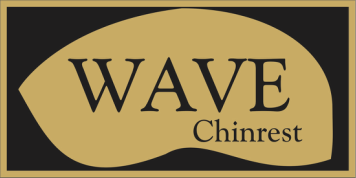Shoulder Rest Height
A good first question is: how should we gain the needed height to support the instrument?
There is a space between the shoulder and the jaw, in which we place the instrument. This space is generally greater than the height offered by the instrument alone, and needs to be filled by attachments onto the violin. Players often have attempted to fill that space by using tall shoulder rests and low chinrests.
This, however, brings the instrument up into an often awkward height relative to the shoulders, forcing the player to "climb" the instrument with their bow arm in order to play on the lower strings, play toward the frog, etc.
In addition, moving the bow arm up to reach that higher point can result in extra muscular effort needed to maintain that hold, resulting in a stiffness that can negatively affect spiccato and other bowing techniques.
For the left hand, the higher position can effect tension in the left shoulder, and can also negatively affect the angle at which the fingers address the strings.
So let's consider a lower shoulder rest.
If we use a taller chinrest and a lower shoulder rest, the instrument is brought down to a level closer to the shoulders. Less effort is needed to raise the arms to reach the instrument, and the weight of the right arm is applied more directly to the strings, resulting in a fuller, deeper, richer sound.
There's more shoulder rest info...read here to find it.
A good first question is: how should we gain the needed height to support the instrument?
There is a space between the shoulder and the jaw, in which we place the instrument. This space is generally greater than the height offered by the instrument alone, and needs to be filled by attachments onto the violin. Players often have attempted to fill that space by using tall shoulder rests and low chinrests.
This, however, brings the instrument up into an often awkward height relative to the shoulders, forcing the player to "climb" the instrument with their bow arm in order to play on the lower strings, play toward the frog, etc.
In addition, moving the bow arm up to reach that higher point can result in extra muscular effort needed to maintain that hold, resulting in a stiffness that can negatively affect spiccato and other bowing techniques.
For the left hand, the higher position can effect tension in the left shoulder, and can also negatively affect the angle at which the fingers address the strings.
So let's consider a lower shoulder rest.
If we use a taller chinrest and a lower shoulder rest, the instrument is brought down to a level closer to the shoulders. Less effort is needed to raise the arms to reach the instrument, and the weight of the right arm is applied more directly to the strings, resulting in a fuller, deeper, richer sound.
There's more shoulder rest info...read here to find it.
